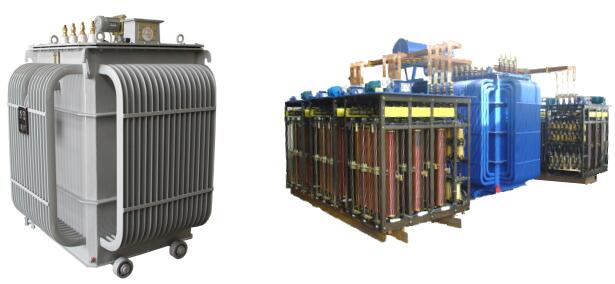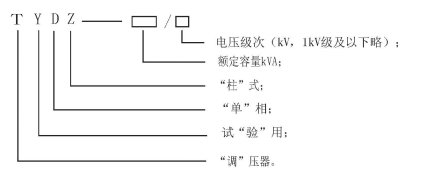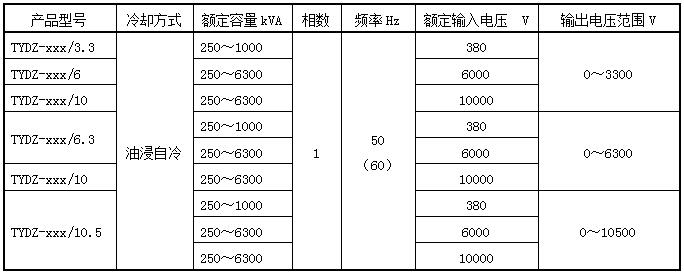No.333,jinyuan fourth road,jiangqiao town,jiading district,Shanghai
Tel:021-39556131
Fex:021-39556131
Email:info@senpu-sh.com
website:www.senpu-sh.com

No.333,jinyuan fourth road,jiangqiao town,jiading district,Shanghai
Tel:021-39556131
Fex:021-39556131
Email:info@senpu-sh.com
website:www.senpu-sh.com
Shanghai Senpu Electric Research Institute, Shanghai Sendi Voltage Regulation and Transformer Equipment Co., Ltd. Liu Qi Ding Lanying
1 Basic requirements for voltage regulators of ultra-high voltage test transformers
The ultra-high voltage power system puts forward higher requirements for the ultra-high voltage test power supply. In order to achieve this requirement, how to select the pre-stage voltage regulator of the over-voltage test transformer has become an important topic. In addition to the basic parameters such as capacity, number of phases, frequency, and output voltage range that should meet the requirements, the voltage regulator is also required to have the following points.
1.1 Output voltage
a. The output voltage waveform distortion rate is small;
b. Stepless, smooth and continuous pressure regulation;
c. The lower limit of the output voltage is approximately zero.
1.2 Performance parameters
a. Small no-load current, low total loss and high efficiency;
b. Instantaneous sudden overload capability;
c. Low noise.
1.3 Requirements for special high voltage test (AC and DC pollution test)
a. Low impedance;
b. The output voltage is in phase with the input voltage.
2 Performance analysis of three original voltage regulators
The voltage regulator for high voltage test, the original contact voltage regulator, induction voltage regulator and coil shifting regulator.
2.1 Contact the regulator
Contact voltage regulator (ring iron core) is a special autotransformer that changes the contact position of the brush and changes the turns ratio of the primary winding and the secondary winding to change the output voltage. It has the advantages of small output voltage distortion, low noise, the minimum voltage value is approximately zero, and the output voltage can be adjusted steplessly, smoothly and continuously. Contact regulators are widely used in traditional small-capacity high-voltage test equipment.
The single-unit capacity of the contact voltage regulator is small, and it is a contact output. There are sparks during the adjustment process, which limits its application in large-capacity and high-voltage test equipment.
2.2 Induction regulator
The structure and electromagnetic principle of the induction voltage regulator are similar to the locked-rotor wire-wound asynchronous motor, and the energy conversion relationship is similar to that of a transformer. phase) to achieve the purpose of non-contact voltage regulation.
The comprehensive technical and economic indicators of the induction voltage regulator are higher than that of the coil shifting voltage regulator, but its instantaneous overload capacity is poor, and the waveform distortion and operating noise are not as good as that of the contact voltage regulator. Inductive regulators are rarely used.
2.3 Coil transfer regulator
The structure and electromagnetic principle of the coil-shifting voltage regulator are similar to those of the transformer. It uses a short-circuit coil that moves up and down along the height of the iron core to change the impedance and voltage distribution of the two coils of the main circuit to achieve the purpose of adjusting the output voltage.
Although the moving coil voltage regulator is a non-contact voltage regulation, the output voltage is smooth and uniform. Based on the structural principle, the product has high impedance voltage, large no-load current and low efficiency. Therefore, the high voltage test voltage regulator has not adopted the moving coil voltage regulation. device.
3TYDZ type column regulator for high pressure test
3.1 Introduction
As analyzed in Chapter 2 of this paper, contact voltage regulators, induction voltage regulators, and coil shifting voltage regulators are not ideal pre-stage voltage regulators for high-voltage test equipment. In order to meet the special requirements of high-voltage test equipment for the pre-stage voltage regulating power supply, Liu Qi and Ding Lanying, the chief engineers of Shanghai Semper Electric Research Institute, have solved the problems of brush spark, contact capacity, contact device, reduction of A series of technical and technological difficulties such as impedance, capacity expansion, and voltage level improvement have been successfully developed. A complete new series of TYDZ high-voltage test column voltage regulators with excellent performance has been successfully developed.
The TYDZ type single-phase 1800, 6000kVA, 10kV/0~10.5kV high voltage test column voltage regulator developed by Shanghai Semper Electric Research Institute has been used in China Electric Power Research Institute, Wuhan High Voltage Research Institute, State Power Grid South Grid , Suzhou Electrical Apparatus Research Institute and other units. At the request of users, TYDZ single-phase 8400kVA 10kV/0~10.5kV high voltage test column voltage regulator has been developed.

2.1 Product use
TYDZ type high pressure test column regulator is also a contact type regulator, because its iron core is cylindrical, so it is called a column regulator. The TYDZ type column voltage regulator has all the advantages of the contact voltage regulator (ring iron core), but overcomes all the shortcomings of the contact voltage regulator. It is an ideal front-stage voltage regulator for high-voltage test equipment, mainly used for high voltage It is the voltage regulating power supply for the test equipment and the test equipment of the research institute.
2.2 Product model and specification
2.2.1 Product model

2.1.1 Product Specifications

Note:①The xxx data in the product model indicates the rated capacity;
②The voltage regulator designed according to 50Hz can also be used for 60Hz power supply;
③Capacity according to R10 priority number system: 250, 315, 400, 500, 630, 800, 1000, 1250, 1600, 2000, 2500, 3150, 4000, 5000, 6300kVA;
④The company can also undertake the design and manufacture of products that are not in the capacity and voltage specifications in this table.
2.1 Product performance
a. Small no-load current, low total loss, efficiency > 98%;
b. The contact system is reliable and spark-free, and the output voltage can be adjusted smoothly, steplessly and continuously;
c. The minimum value of the output voltage is approximately zero, which greatly improves the safety of use;
d. The impedance voltage is low, which can meet the requirements of high voltage test (such as pollution test);
e. Output voltage waveform distortion rate is small = 0.5%;
f. The input and output voltages are in the same phase;
g. Product noise is less than 65dB(A);
h. It can be equipped with a digital voltage regulator control cabinet, so that the voltage regulator can be automatically controlled;
2.2 Others
For the working principle, product structure, control circuit, installation, use and maintenance of the product, please refer to the relevant chapters of the column type regulator in the "Expert Forum" on this website.